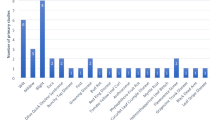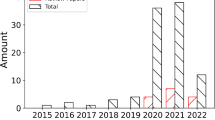Abstract
Maize is one of the world's most important food crops, but its cultivation is hampered by diseases. Rapid disease identification remains a challenge due to a lack of the necessary infrastructure. This necessitates the development of automated methods to identify diseases. In this research, the use of deep learning models to identify maize leaf diseases is proposed. In this article, we investigate the transfer learning of deep convolutional neural networks for the detection of maize leaf diseases and explore employing the knowledge of pre-trained models and then transferring the knowledge to our dataset. In this attempt, we employ pre-trained VGG16, ResNet50, InceptionV3, and Xception models to classify three common maize leaf diseases using a dataset of 18,888 images of healthy and diseased leaves. Besides, Bayesian optimization is used to choose optimal values for hyperparameters, and image augmentation is used to improve the model's ability to generalize. The work includes a comparative study and analysis of the proposed models. The results demonstrate that all trained models have an accuracy of more than 93% in classifying maize leaf diseases. In particular, VGG16, InceptionV3, and Xception achieved an accuracy of more than 99%. Furthermore, our methodology provides new avenues for the detection of maize leaf diseases.






Similar content being viewed by others
References
Mueller DS et al (2016) Corn yield loss estimates due to diseases in the United States and Ontario, Canada from 2012 to 2015. Plant Health Progr 17(3):211–222
Shiferaw B et al (2011) Crops that feed the world 6. Past successes and future challenges to the role played by maize in global food security. Food Secur 3(3):307–327
Barbedo JGA (2016) A review on the main challenges in automatic plant disease identification based on visible range images. Biosys Eng 144:52–60
Mohanty SP, Hughes DP, Salathé M (2016) Using deep learning for image-based plant disease detection. Front Plant Sci 7:1419
Jiang F et al (2017) Artificial intelligence in healthcare: past, present and future. Stroke Vascular Neurol 2(4):230–243
Atila Ü et al (2021) Plant leaf disease classification using EfficientNet deep learning model. Ecol Inf 61:101182
Song K, Sun X, Ji J (2007) Corn leaf disease recognition based on support vector machine method. Trans CSAE 23(1):155–157
Li, C. and L. Wang, (2011) Research on application of probability neural network in maize leaf disease identification. J Agric Mechan Res, 6
Xu L et al (2015) Corn leaf disease identification based on multiple classifiers fusion. Trans Chin Soc Agric Eng 31(14):194–201
Wang N et al (2009) Maize leaf disease identification based on fisher discrimination analysis. Scientia Agricultura Sinica 42(11):3836–3842
Qi Z et al (2016) Identification of maize leaf diseases based on image technology. J Anhui Agric Univ 43(2):325–330
Zhang F (2013) Recognition of corn leaf disease based on quantum neural network and combination characteristic parameter. J Southern Agric 44(8):1286–1290
LeCun Y, Bengio Y, Hinton G (2015) Deep learning. Nature 521(7553):436–444
Kamilaris A, Prenafeta-Boldú FX (2018) A review of the use of convolutional neural networks in agriculture. J Agric Sci 156(3):312–322
Ciresan, D.C., et al. (2011) Flexible, high performance convolutional neural networks for image classification. In: twenty-second international joint conference on artificial intelligence
Hinton G et al (2012) Deep neural networks for acoustic modeling in speech recognition: the shared views of four research groups. IEEE Signal Process Mag 29(6):82–97
Kamilaris A, Prenafeta-Boldú FX (2018) Deep learning in agriculture: a survey. Comput Electron Agric 147:70–90
Ferentinos KP (2018) Deep learning models for plant disease detection and diagnosis. Comput Electron Agric 145:311–318
Hu G et al (2019) Identification of tea leaf diseases by using an improved deep convolutional neural network. Sustain Comput Inf Syst 24:1003
Saleem MH, Potgieter J, Arif KM (2019) Plant disease detection and classification by deep learning. Plants 8(11):468
Lee, S.H., et al. (2015) Deep-plant: plant identification with convolutional neural networks. In: 2015 IEEE international conference on image processing (ICIP), IEEE
S. V. Kogilavani, S.M., (2019) Deep learning based model for plant disease detection. Int J Innovat Technol Explor Eng, 8(12)
Singh V, Misra AK (2017) Detection of plant leaf diseases using image segmentation and soft computing techniques. Inf Process Agric 4(1):41–49
Joshi RC et al (2021) VirLeafNet: automatic analysis and viral disease diagnosis using deep-learning in Vigna mungo plant. Ecol Inf 61:101197
Best N, Ott J, Linstead EJ (2020) Exploring the efficacy of transfer learning in mining image-based software artifacts. J Big Data 7(1):1–10
Tian, L., et al. (2015) Stacked PCA network (SPCANet): an effective deep learning for face recognition. In: 2015 IEEE international conference on digital signal processing (DSP), IEEE
Krizhevsky A, Sutskever I, Hinton GE (2012) Imagenet classification with deep convolutional neural networks. Adv Neural Inf Process Syst 25:1097–1105
Chen J et al (2021) Attention embedded lightweight network for maize disease recognition. Plant Pathol 70(3):630–642
Priyadharshini RA et al (2019) Maize leaf disease classification using deep convolutional neural networks. Neural Comput Appl 31(12):8887–8895
Sun, X. and J. Wei. (2020) Identification of maize disease based on transfer learning. In: journal of physics: conference series, IOP Publishing
Waheed A et al (2020) An optimized dense convolutional neural network model for disease recognition and classification in corn leaf. Comput Electr Agric 175:105456
Mishra S, Sachan R, Rajpal D (2020) Deep convolutional neural network based detection system for real-time corn plant disease recognition. Procedia Comput Sci 167:2003–2010
da Rocha, E.L., L. Rodrigues, and J.F. Mari. (2020) Maize leaf disease classification using convolutional neural networks and hyperparameter optimization. In: Anais do XVI Workshop de Visão Computacional, SBC
Sibiya M, Sumbwanyambe M (2019) A computational procedure for the recognition and classification of maize leaf diseases out of healthy leaves using convolutional neural networks. AgriEngineering 1(1):119–131
Lin Z et al (2018) A novel method of maize leaf disease image identification based on a multichannel convolutional neural network. Trans ASABE 61(5):1461–1474
Arora J, Agrawal U (2020) Classification of maize leaf diseases from healthy leaves using deep forest. J Artif Intell Syst 2(1):14–26
Sibiya M, Sumbwanyambe M (2021) Automatic fuzzy logic-based maize common rust disease severity predictions with thresholding and deep learning. Pathogens 10(2):131
Sun J et al (2020) Northern maize leaf blight detection under complex field environment based on deep learning. IEEE Access 8:33679–33688
Zhang X et al (2018) Identification of maize leaf diseases using improved deep convolutional neural networks. IEEE Access 6:30370–30377
Bhatt, P., et al. (2019) Identification of diseases in corn leaves using convolutional neural networks and boosting. In: ICPRAM
Chen G et al (2019) Corn plant disease recognition based on migration learning and convolutional neural network. Smart Agric 1(2):34
Agarwal, M., et al. (2019) A convolution neural network based approach to detect the disease in corn crop. In: 2019 IEEE 9th international conference on advanced computing (IACC), IEEE
Ruedeeniraman, N., M. Ikeda, and L. Barolli. (2020) An intelligent VegeCare tool for corn disease classification. In: international conference on P2P, parallel, grid, cloud and internet computing, Springer
Hu, R., et al. (2020) The identification of corn leaf diseases based on transfer learning and data augmentation. In: proceedings of the 2020 3rd international conference on computer science and software engineering
Panigrahi, K.P., A.K. Sahoo, and H. Das. (2020) A CNN approach for corn leaves disease detection to support digital agricultural system. In: 2020 4th international conference on trends in electronics and informatics (ICOEI) (48184), IEEE
Blake Richey, M.V.S., (2021) Deep learning based real-time detection of Northern Corn Leaf Blight crop disease using YoloV4. In: proceeding SPIE 11736, real-time image processing and deep learning
Hidayat A, Irmawati UD (2019) Detection of disease on corn plants using convolutional neural network methods. J Comput Sci Inf. 12(1):51–56
Wang Z, Zhang S (2018) Segmentation of corn leaf disease based on fully convolution neural network. Acad J Comput Inf Sci. https://doi.org/10.25236/AJCIS.010002
Yang M, Zhang Y, Liu T (2020) Corn disease recognition based on the Convolutional Neural Network with a small sampling size. Chin J Eco-Agric 28(12):1924–1931
Goodfellow I et al (2016) Deep learning, vol 1. MIT Press, Cambridge
Ponti, M.A., et al. (2017) Everything you wanted to know about deep learning for computer vision but were afraid to ask. In: 2017 30th SIBGRAPI conference on graphics, patterns and images tutorials (SIBGRAPI-T), IEEE
LeCun, Y., F.J. Huang, and L. Bottou. (2004) Learning methods for generic object recognition with invariance to pose and lighting. In: proceedings of the 2004 IEEE computer society conference on computer vision and pattern recognition, 2004. CVPR 2004, IEEE
LeCun Y et al (1995) Learning algorithms for classification: a comparison on handwritten digit recognition. Neural Netw Statistical Mech Perspect 261(276):2
Patterson J, Gibson A (2017) Deep learning: a practitioner’s approach. O’Reilly Media, Inc., United States
Simonyan, K. and A. Zisserman, (2014) Very deep convolutional networks for large-scale image recognition. arXiv preprint arXiv:1409.1556
Chollet F (2018) Deep learning with Python, vol 361. Manning, New York
He, K., et al. (2016) Deep residual learning for image recognition. In: proceedings of the IEEE conference on computer vision and pattern recognition
Szegedy, C., et al. (2015) Going deeper with convolutions. In: proceedings of the IEEE conference on computer vision and pattern recognition
Ioffe, S. and C. Szegedy (2015) Batch normalization: accelerating deep network training by reducing internal covariate shift. In: international conference on machine learning, PMLR
Szegedy, C., et al. (2016) Rethinking the inception architecture for computer vision. In: proceedings of the IEEE conference on computer vision and pattern recognition
Chollet, F. (2017) Xception: deep learning with depthwise separable convolutions. In: proceedings of the IEEE conference on computer vision and pattern recognition
Chen J et al (2020) Using deep transfer learning for image-based plant disease identification. Comput Electr Agric 173:105393
Canziani, A., A. Paszke, and E. Culurciello, (2016) An analysis of deep neural network models for practical applications. arXiv preprint arXiv:1605.07678
Sameen MI, Pradhan B, Lee S (2020) Application of convolutional neural networks featuring Bayesian optimization for landslide susceptibility assessment. Catena 186:104249
Pelikan, M., D.E. Goldberg, and E. Cantú-Paz. BOA: The Bayesian optimization algorithm. In: proceedings of the genetic and evolutionary computation conference GECCO-99. 1999. Citeseer
Google Colaboratory: Frequently Asked Questions. . 2018; Available from: https://research.google.com/colaboratory/faq.html
Xu Y et al (2021) Maize diseases identification method based on multi-scale convolutional global pooling neural network. IEEE Access 9:27959–27970
Lv M et al (2020) maize leaf disease identification based on feature enhancement and DMS-robust alexnet. IEEE Access 8:57952–57966
Acknowledgements
We acknowledge and thank the Department of Science and Technology (Government of India) for sanctioning the research grant (Ref. No.SR/FST/COLLEGE-096/2017 dated 16.01.2018) under the Fund for Improvement of S&T Infrastructure (FIST) program for completing this work.
Funding
This research work does not receive funding from any agencies.
Author information
Authors and Affiliations
Contributions
MS: Performed the analysis, wrote the paper. KS: Collected the data and analysis of data, assisted in writing the paper. PSN: Designed the models.
Corresponding author
Ethics declarations
Conflict of interest
The authors declare that they have no known competing financial interests or personal relationships that could have appeared to influence the work reported in this paper.
Ethics approval
Not Applicable.
Data availability
Not Applicable.
Code availability
All the source code and models are available locally. After the publication, they will be made available publicly.
Consent for publication
We declare that we participate in this study and the development of this manuscript. We have read the final version and give consent for the article to be published in this journal.
Additional information
Publisher's Note
Springer Nature remains neutral with regard to jurisdictional claims in published maps and institutional affiliations.
Rights and permissions
About this article
Cite this article
Subramanian, M., Shanmugavadivel, K. & Nandhini, P.S. On fine-tuning deep learning models using transfer learning and hyper-parameters optimization for disease identification in maize leaves. Neural Comput & Applic 34, 13951–13968 (2022). https://doi.org/10.1007/s00521-022-07246-w
Received:
Accepted:
Published:
Issue Date:
DOI: https://doi.org/10.1007/s00521-022-07246-w




